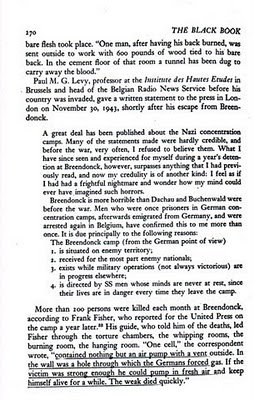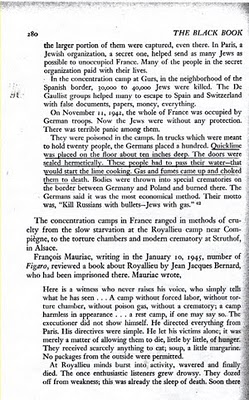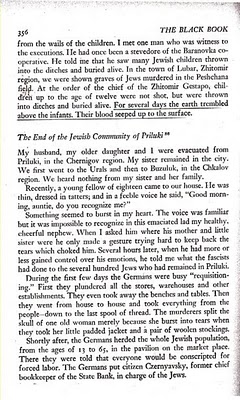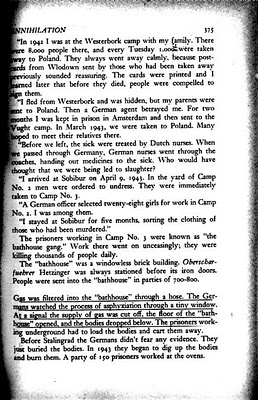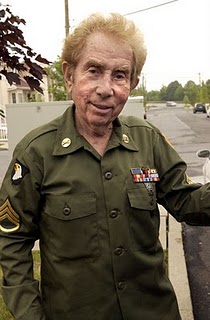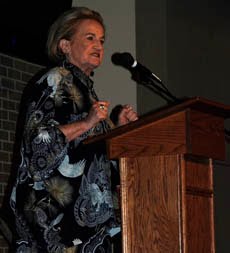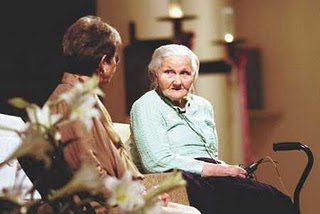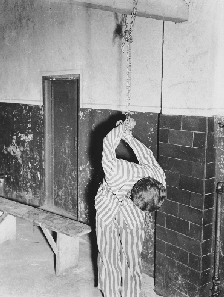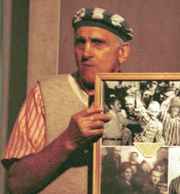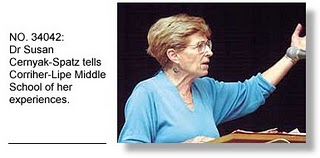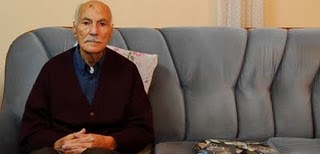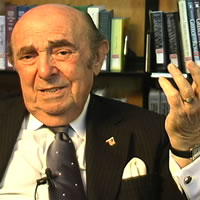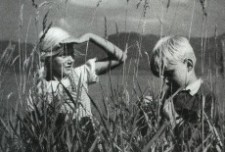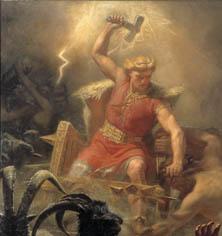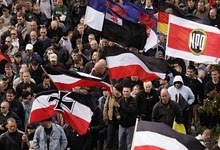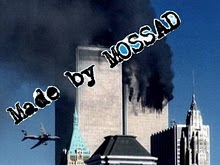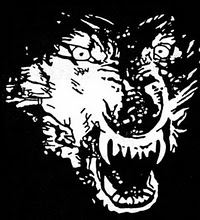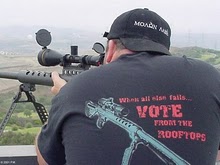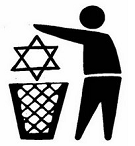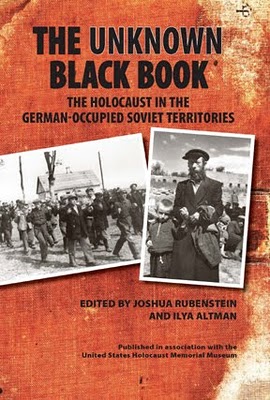
Wikipedia:
The Black Book was a result of the collaborative effort by the Jewish Anti-Fascist Committee (JAC) and members of the American Jewish community to document the anti-Jewish crimes of the Holocaust and the participation of Jews in the fighting and the resistance movement against the Nazis during World War II.
Background
Prominent Jewish Soviet writers and journalists Ilya Ehrenburg and Vasily Grossman served as war reporters for the Red Army. Grossman's documentary reports of the opening of the Treblinka and Majdanek extermination camps were some of the first eyewitness accounts — as early as 1943 — of what later became known as the Shoah. His article The Treblinka Hell (Треблинский ад, 1944) was disseminated at the Nuremberg Trials as a document for the prosecution.
Manuscripts and publications
In 1944–1945, based on their own experiences and on other documents they collected, Ehrenburg and Grossman produced two volumes under the title Murder of the People in Yiddish and handed the manuscript to the JAC. Copies were sent to the United States, Israel (then the British mandate of Palestine) and Romania in 1946, and excerpts were published in the United States in English under the title Black Book that same year. In Romania, a part of the manuscript was also published in 1946. It was also printed in Israel. A handwritten manuscript of the book is held at Yad Vashem.
Purchase
Review:
It's a rare reader who'll be able to get through The Unknown Black Book without having to walk away from it several times. The tragedies it documents are just too horrible to bear except in small doses. Both text and photographs stun the imagination and freeze the heart.
The UBB is a narrative history of Nazi atrocities against the Jews in the German-occupied Soviet territories (Ukraine, Belorussia, Lithuania, Latvia, Estonia, The Crimea, and Russia) during WWII. It contains 93 documents, almost half of which are written by eyewitnesses. The rest are compilations of various eyewitness accounts by the editors, a couple of Soviet Jewish journalists, Ilya Ehrenburg and Vasily Grossman, who began collecting material as early as 1942. The eyewitness accounts include diaries, letters, and testimonies of those Russian Jews who managed to survive the wholescale exterminations carried out by the Eastern Front Einsatzgruppen (one of which was commanded by a direct descendant of the composer Franz Schubert).
Excerpts (via website of Carlos Whitlock Porter):
SELECTED LIES FROM THE “BLACK BOOK”
PUBLISHED BY THE JEWISH BLACK BOOK COMMITTEE, 1946
World Jewish Congress, New York
Jewish Anti-Fascist Committee, Moscow
Vaad Leumi (Jewish National Council of Palestine, Jerusalem)
American Committee of Jewish Writers, Artists and Scientists, New York.
Inside cover blurb: “The entire manuscript of THE BLACK BOOK was submitted to the juridical authorities of the United Nations War Crimes Commission meeting at Nuremberg, Germany, as evidence of the crimes committed by the Nazis against the Jewish people.”
PAGE 270, BREENDONCK CAMP, BELGIUM: “One man, after having his back burned, was sent outside to work with 600 pounds of wood tied to his bare back… One cell… contained nothing but an air pump with a vent outside. In the wall was a hole through which the Germans forced gas. If the victim was strong enough he could pump in fresh air and keep himself alive for a while. The weak died quickly.”
PAGE 280, FRANCE: “They were poisoned in the camps. In trucks which were meant to hold twenty people, the Germans placed a hundred. Quicklime was placed on the floor about ten inches deep. The doors were sealed hermetically. These people had to pass their water – that would start the lime cooking. Gas and fumes came up and choked them to death. Bodies were thrown into special crematories on the border between Germany and Poland [sic] and burned there.” [Note: this apparently refers to the concentration camp at Gun [?], in Southern France, near the Spanish border, but it is not very clear. Did they really kill them on the Spanish border and then transport them all the way to the Polish border just to burn the bodies?]
Page 281, NATZWEILER: "Cremation of one corpse required fifteen minutes."
PAGE 313, BELZEC: “The Belzec camp is built underground. It is an electric crematorium. There are two halls in the underground buildings. People were taken out of the railway cars into the first hall. Then they were led naked to the second hall. Here the floor resembled an enormous plate. When the crowd of men stood on it, the floor sank deep into a pool of water. The moment the men sank up to their necks, a powerful electric current of millions of volts was passed through, killing them all at once. The floor rose again, and a second electric current was passed through the bodies, burning them until nothing was left of the victims save a few ashes.”
PAGE 339, TATARSK, RUSSIA: “A river of blood flowed from their home…”
PAGE 356, THE UKRAINE: “Children up to the age of fifteen were not shot, but were thrown into ditches and buried alive. For several days the earth trembled above the infants. Their blood seeped up to the surface.”
PAGE 364, SOMEPLACE IN RUSSIA: “On the tenth day we were driven to the Lykyanovka ravine. We stood there – panic-stricken. From beneath the freshly strewn earth streamed rivers of blood, the blood of 56,000 murdered Jews. It cried out to us from beneath the earth. My hair turned gray that morning.”
PAGE 375, SOBIBOR: “Gas was filtered into the ‘bathhouse’ through a hose. The Germans watched the process of asphyxiation through a tiny window. At a signal the supply of gas cut off, the floor of the ‘bathhouse’ opened, and the bodies dropped below. The prisoners working underground had to load the bodies and cart them away.”
PAGE 378, POLAND: “The Nazis organized special workers’ brigades to make powder out of human bones; the powder was taken to the village of Zawada, on the Warta river near Kolo, where it was used in building walls.”
PAGE 408, TREBLINKA: “The second Treblinka camp method, and the most widespread one, consisted of pumping all the air out from the chambers with large special pumps. By this method death ensued from approximately the same causes as from poisoning with carbon monoxide: man was deprived of oxygen. And, finally, the third method, less widespread, was killing by steam, based also on deprivation of oxygen: the steam drove air out of the chamber.”
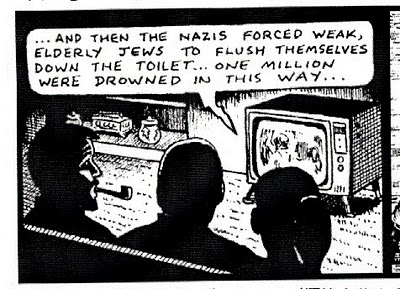
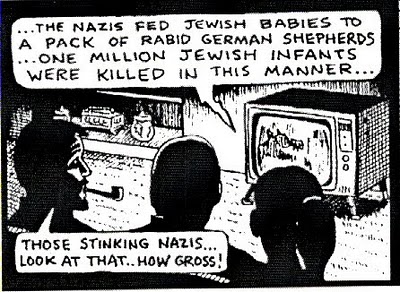
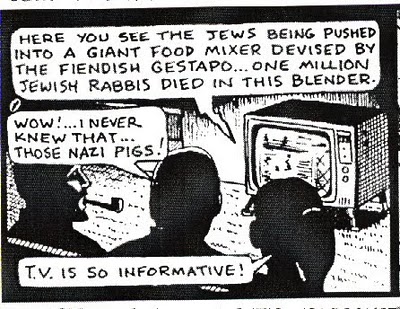
"The Black Book" is endorsed by the USHMM
